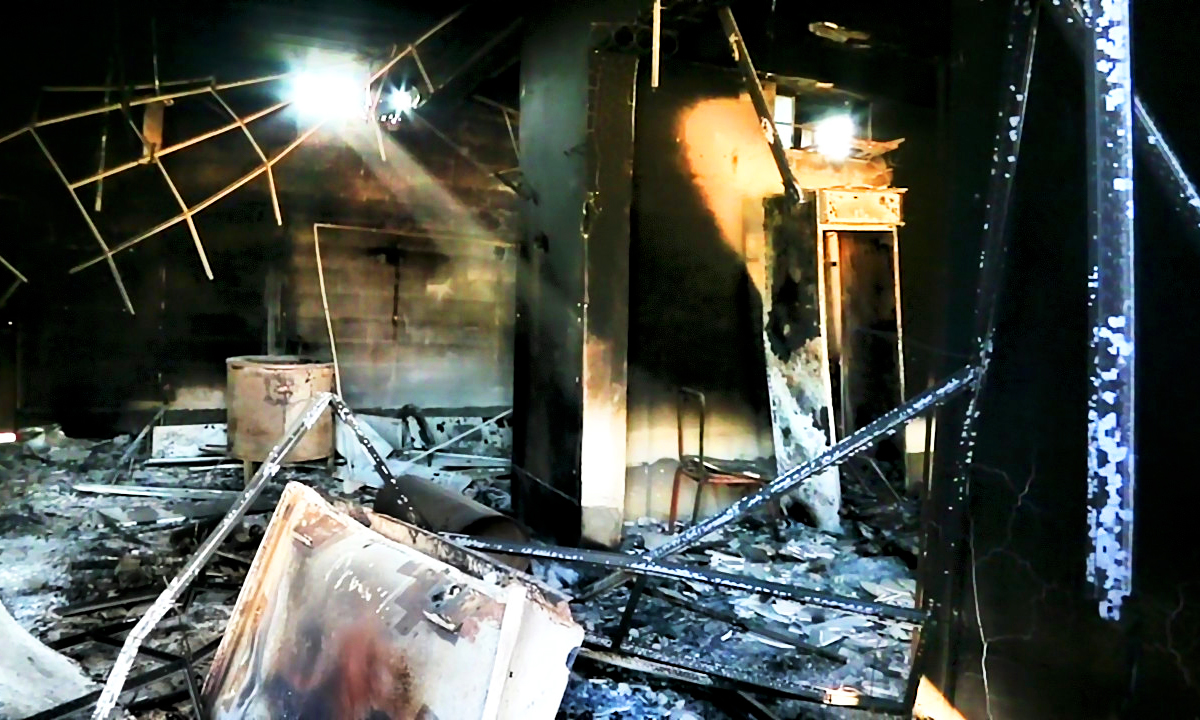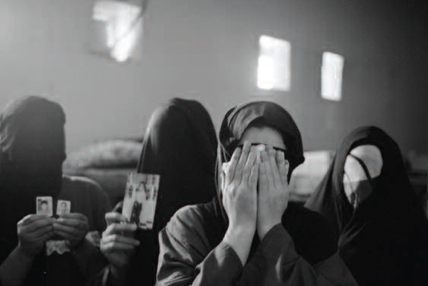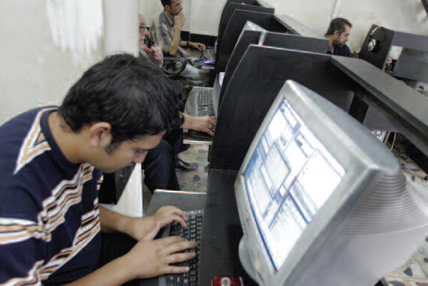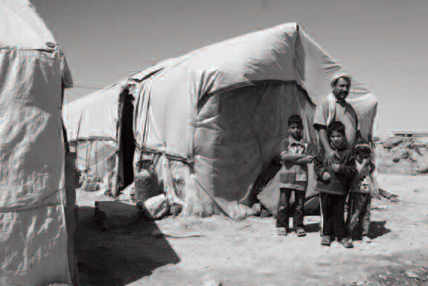Summary
At the end of August 2014, following a three-month siege by the armed group Islamic State (also known as ISIS), Iraqi and United States air strikes and ground operations by pro-government Shia militias and Iraqi and Kurdish government ground forces pushed ISIS away from Amerli, a Shia Turkoman and Sunni Arab town in Salah al-Din province. Except for sporadic clashes, the area has since remained largely free of ISIS fighters.
Following the operations to end the Amerli siege, pro-government militias and volunteer fighters as well as Iraqi security forces raided Sunni villages and neighborhoods around Amerli in Salah al-Din and Kirkuk provinces. Many were villages that ISIS had passed through and in some cases used as bases for their attack on Amerli. During the raids, militiamen, volunteer fighters and Iraqi security forces looted possessions of civilians who fled fighting during the onslaught on Amerli; burned homes and businesses of the villages’ Sunni residents; and used explosives and heavy equipment to destroy individual buildings or entire villages. Human Rights Watch documented the abduction of 11 men in the course of the government’s operation, but local residents said many other men of fighting age had gone missing.
Through satellite imagery analysis Human Rights Watch confirmed building destruction in 30 out of 35 villages examined in a 500 kilometer square area around Amerli. Human Rights Watch was not able to visit all of these locations and assess all villages in the area, but conducted on-site investigations in four villages, and documented details of the militia destruction of 14 villages on the basis of witness accounts. Displaced residents and witnesses to the destruction, including Peshmerga commanders and fighters who were part of the government’s military operation, told Human Rights Watch they believed that in total, building destruction in at least 47 predominantly Sunni villages was methodical and driven by revenge and intended to alter the demographic composition of Iraq’s traditionally diverse provinces of Salah al-Din and Kirkuk.
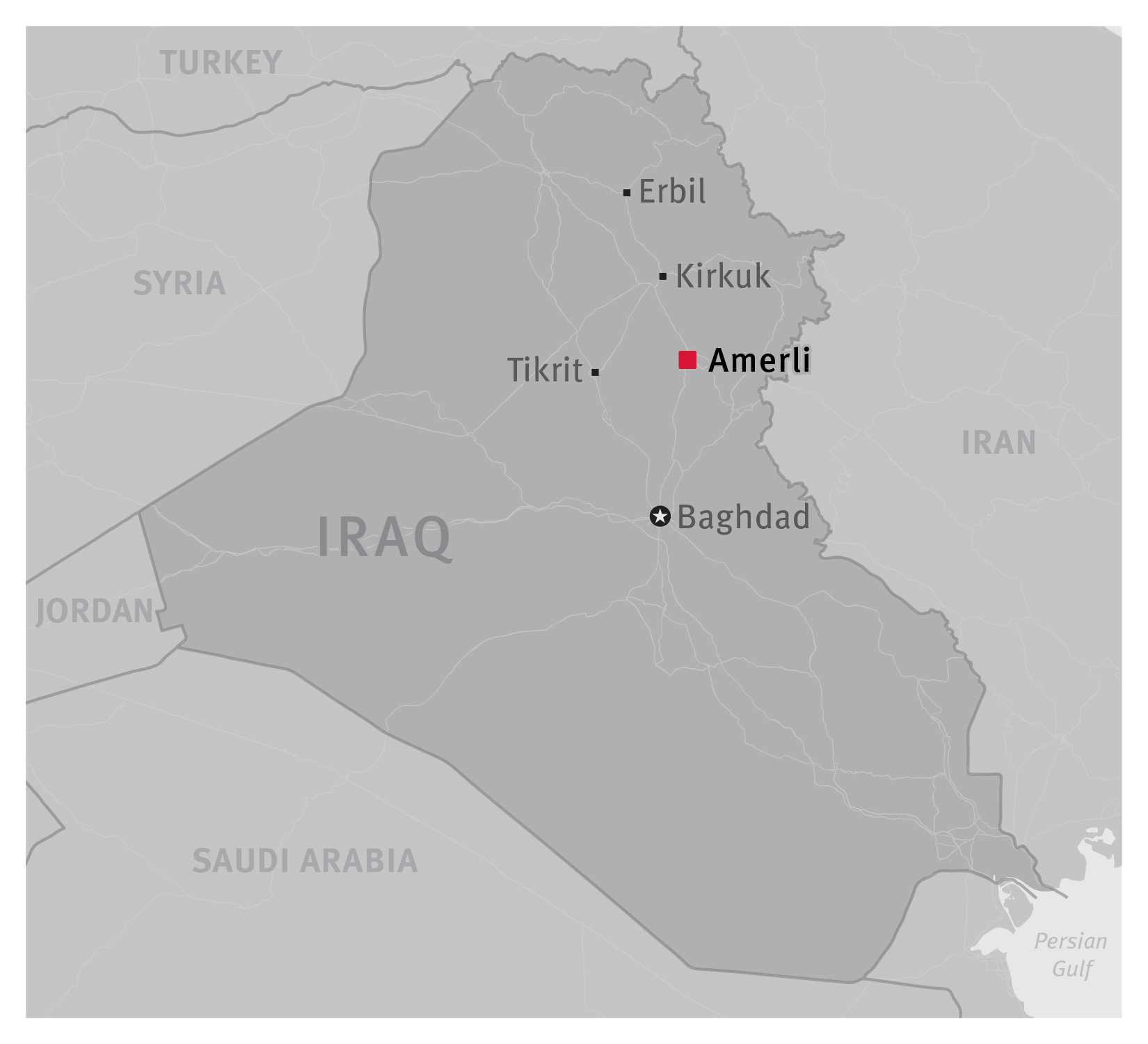
Human Rights Watch could not determine the level of organization at which the documented attacks took place. However, witness statements, video and satellite imagery taken together appear to show that militiamen and other security forces undertook these attacks with mixed motives: as a combination of revenge attacks against civilians believed to have collaborated with ISIS, and collective punishment against Sunnis and other minorities on the basis of their sect. Militias also appear to have planned at least some of the attacks in advance, indicating culpability by government political and military bodies that oversee the militias.
Many Sunni residents of the area fled during the siege of Amerli by ISIS. Those who remained and whom Human Rights Watch interviewed after government and pro-government forces pushed ISIS out of the area said that they had not suffered abuse at the hands of ISIS, but some said that ISIS had targeted the homes and property of residents believed to be linked to the Iraqi government. Elsewhere in Iraq and in Syria, Human Rights Watch has documented serious abuses and war crimes by al-Qaeda and later ISIS, since the group came to prominence in 2013, that likely amount to crimes against humanity.
Approximately 6,000 government and pro-government fighters, including members of several militias, police, army forces, special forces, and paramilitary volunteers in the Hashd al-Shaabi (Popular Front), began a ground offensive to clear the areas surrounding Amerli of ISIS forces on September 1, 2014, one day after US and Iraqi air strikes had driven ISIS forces away from the town. These fighters were in many cases also supported by Peshmerga, as Kurdish military forces are known. Some Peshmerga officers who participated in the operations told Human Rights Watch that they joined forces with militias to “defeat ISIS” but “did not support [the militias’] methods,” which they characterized as sectarian, and said the militias targeted civilians.
Peshmerga officers told Human Rights Watch they saw 47 villages in which militias had destroyed and ransacked homes, businesses, mosques, and public buildings. Residents told Human Rights Watch that the militias included the Badr Brigades, Asa’ib Ahl al-Haqq, Kita’ib Hezbollah, and Saraya Tala’a al-Khorasani, and that they destroyed numerous villages between the towns of al-Khales, in southern Diyala province, and Amerli, about 50 kilometers to the north in Salah al-Din province.
Satellite imagery corroborates witness accounts that in many cases Iraqi government forces and militias targeted the same villages and towns in which, supported by coalition air strikes, they had fought ISIS in the weeks before they lifted ISIS’s siege of Amerli. Satellite imagery showed that most of the damage they inflicted on these towns and villages after they lifted the siege resulted from arson and building demolition.
On the basis of field visits, interviews with more than 30 witnesses, and analysis of photographs and satellite imagery, Human Rights Watch found that an area that included 35 villages and towns showed extensive destruction caused by fire, explosives and heavy earth moving equipment. The evidence showed that most of the damage occurred between early September and mid-November 2014. Using satellite imagery, Human Rights Watch identified over 3,800 destroyed buildings in 30 towns and villages, including 2,600 buildings likely destroyed by fire and a further 1,200 buildings likely demolished with heavy machinery and the uncontrolled detonation of high explosives. This destruction was distinct from damages resulting from air strikes and heavy artillery and mortar fire prior to ISIS’s retreat from Amerli, which Human Rights Watch separately identified using the satellite imagery. Human Rights Watch’s field research together with the satellite imagery analysis indicates that militias engaged in deliberate and wanton destruction of civilian property after the retreat of ISIS and the end of fighting in the area.
In the four towns and villages that Human Rights Watch visited, researchers found evidence of extensive fire damage limited to the interior of buildings that would not be detectable in satellite imagery, indicating actual fire-related building damages are likely to be substantially higher than 2,600 in the affected 30 towns and villages assessed. On the basis of witness statements and analysis of satellite imagery, Human Rights Watch believes this damage was likely the result of arson perpetrated by pro-government forces.
Twenty-four witnesses, including Peshmerga officers and local tribal sheikhs, told Human Rights Watch they saw militias looting towns and villages around Amerli after the offensive against ISIS ended and immediately preceding militia destruction of homes in the town. They said they saw militiamen taking items of value—such as refrigerators, televisions, clothing and even electrical wiring—out of homes before setting the houses on fire.

In two villages (Bir al-Dahab and Habash), Human Rights Watch identified in satellite imagery the heavy smoke plumes of building fires, likely from arson attacks in progress on the morning of September 17. Human Rights Watch similarly detected in satellite imagery active detonation of fire in Laqum and Albu Ghenam on September 6; in Yengija on September 14; in Maftoul Kabir on October 8; and in Pir Ahmadli on November 2.
Arson in Habash
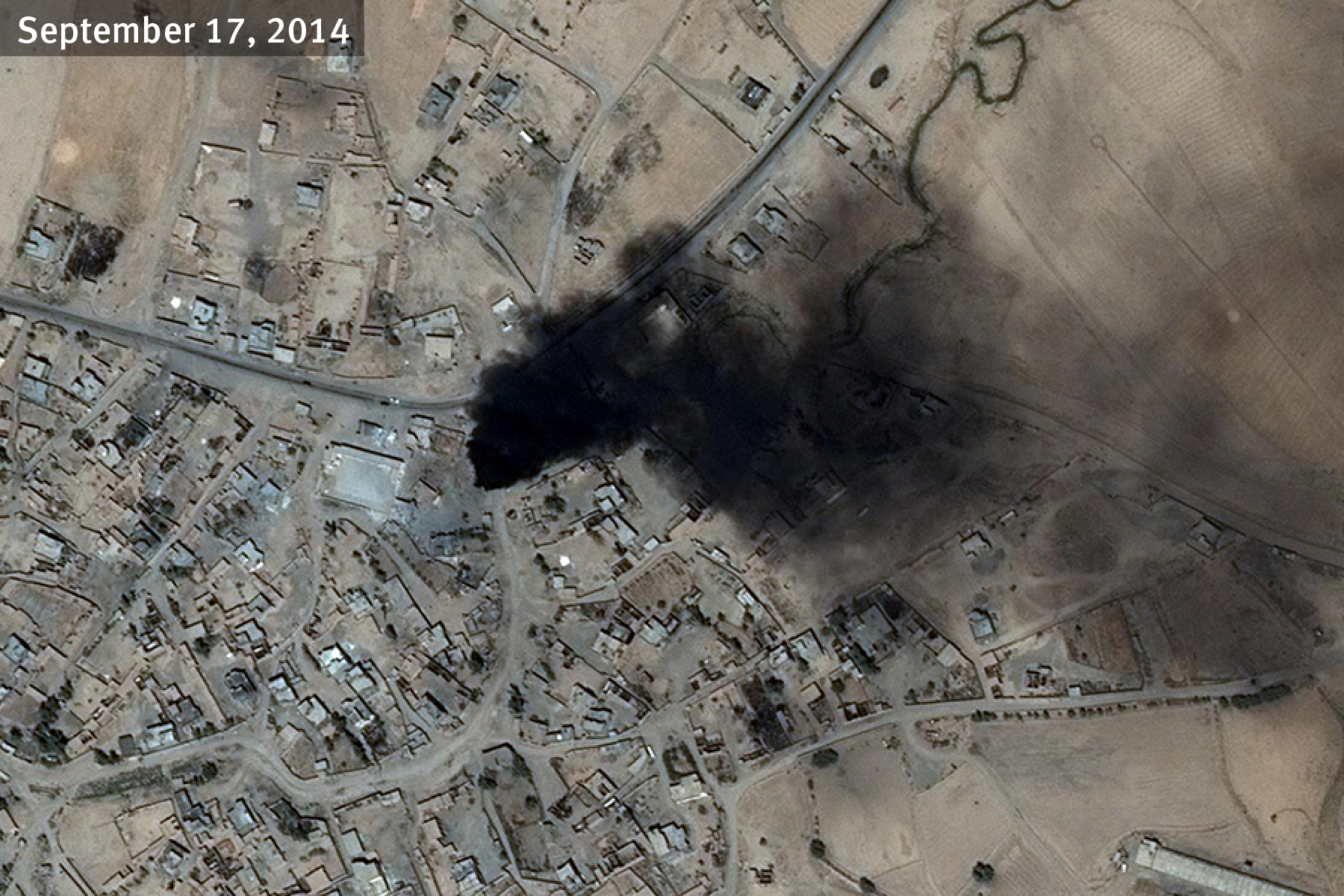
Arson in Bir al-Dahab
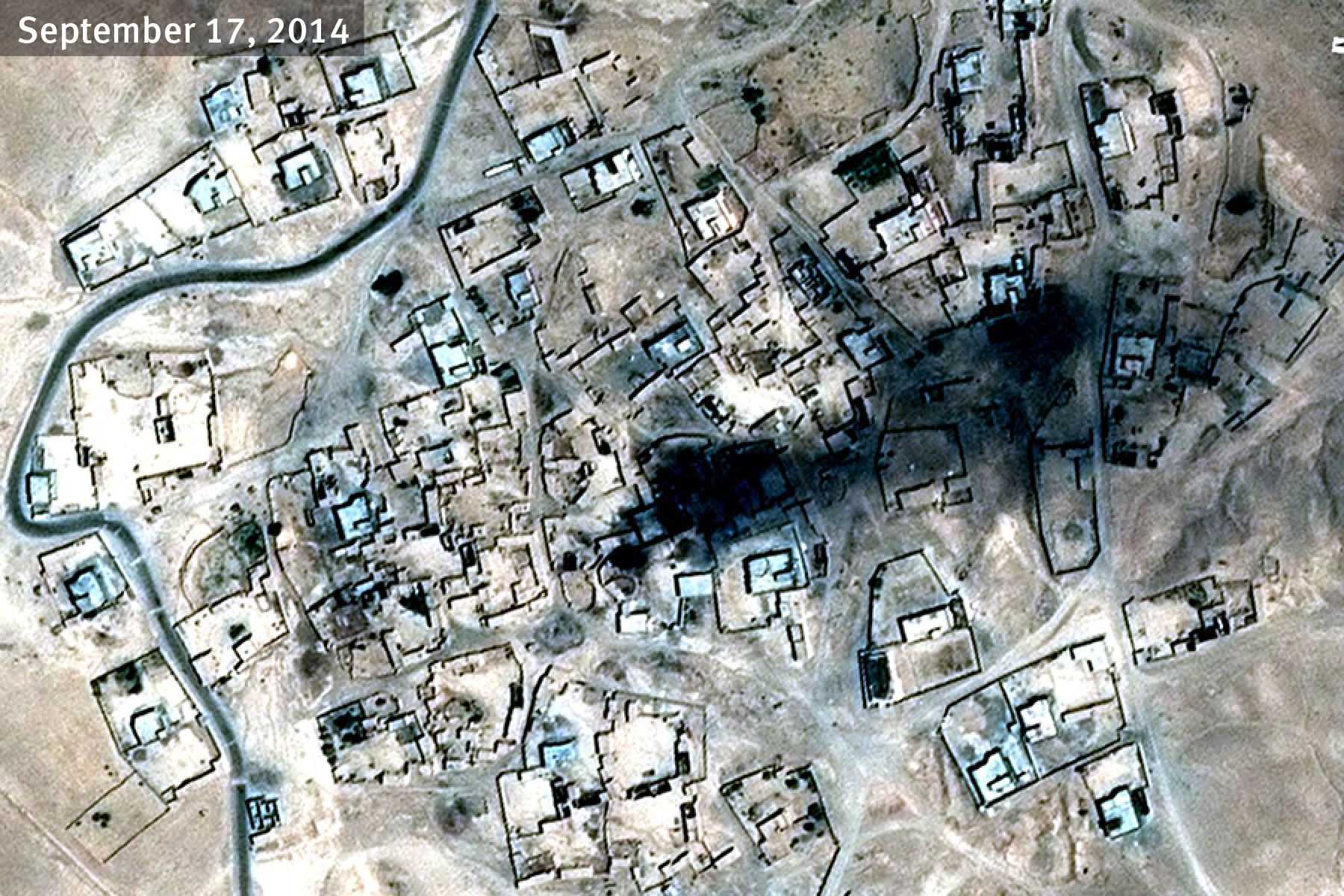
Human Rights Watch documented 11 instances of militias abducting men who had returned to their homes to collect belongings after fleeing the fighting. Witnesses said the few who have been released have not come forward for fear of reprisal attacks.
Human Rights Watch did not document reports of killings of civilians, despite documenting fairly vicious reprisals. Human Rights Watch has documented allegations of militia killings and other abuses in numerous other areas of Iraq in several reports in 2013 and 2014. Media reports of militia abuses during the course of fighting increased dramatically in late 2014 and 2015. On February 17, Shia cleric Muqtada al-Sadr condemned militia abuses and announced a freeze of the activities of two militias he oversees, Youm al-Mawoud and Saraya al-Salam, that had been fighting alongside other militias and Iraqi security forces against ISIS.
Destruction of civilian objects, such as homes, cannot be justified if there were no military targets and no ongoing fighting in or near the area, and therefore would violate international humanitarian law. The abuses Human Rights Watch documented also appear to amount to collective punishment, also prohibited in international humanitarian law.
In view of the seriousness of the crimes documented here and other serious crimes carried out by the pro-government militias elsewhere in Iraq that Human Rights Watch has also documented, Human Rights Watch recommends that Prime Minister Hayder Abadi take immediate steps to disband militias; protect civilians in areas where militias are fighting; assess and provide for the humanitarian needs of people displaced by militias; and hold accountable those responsible for serious crimes such as those documented in this report. In a December 18 op-ed in the Wall Street Journal, Abadi pledged to “bring … all armed groups under state control. No armed groups or militias will work outside or parallel to the Iraqi Security Forces.” The abuses that Human Rights Watch documented in this report show that it is imperative that Abadi makes good on this pledge.
Human Rights Watch also calls on the United Nations, the US and other countries participating in the conflict in Iraq to publicly condemn widespread militia abuses in the fight against ISIS and press Iraq and the UN’s Human Rights Council to investigate crimes by militias and security forces against civilians. Countries participating in the hostilities, including the United States and Iran, should condition military assistance to Iraq on the government’s showing that it is able to end the very serious crimes perpetrated by militias.
